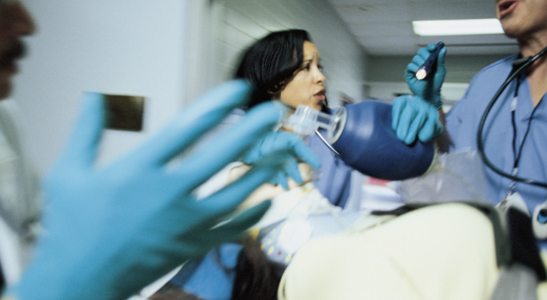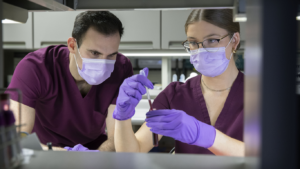The healthcare industry’s rapid evolution has sparked demand for cost-effective solutions, and one area gaining significant traction is medical equipment resale. As hospitals and clinics face budget constraints, reconditioned devices offer a practical alternative without compromising quality. This growing trend is reshaping how we think about sustainability and affordability in healthcare.
This has boosted confidence in the resale market, making it an attractive option for healthcare providers. With advancements in technology and a focus on reducing waste, the resale of medical equipment isn’t just a cost-saving measure—it’s a step toward a more sustainable future.
MORE NEWS: Tripadvisor reveals the must-visit destinations for 2025
Understanding The Business of Healthcare
The healthcare industry combines essential services with financial management, requiring organizations to balance patient care and operational costs, especially when treating c7 vertebrae. Hospitals, clinics, and private practices seek efficient solutions, especially as rising expenses impact service delivery. The resale of medical equipment plays a key role in addressing these challenges.
Reconditioned devices, such as imaging machines and surgical tools, provide reliable alternatives to purchasing new. These options help facilities maintain high medical standards without exceeding budgets. For example, demand for refurbished equipment extends to niche markets, including individuals searching for terms like “sell used oxygen concentrator near me,” which highlights the accessibility of specific medical devices.
Regulatory oversight ensures that safety and performance remain uncompromised. Guidelines, such as those from the FDA, outline standards for refurbishing, reconditioning, and reselling products within the sector. These measures have strengthened trust in the resale market while supporting providers’ financial objectives.
This business model enhances sustainability efforts by minimizing electronic waste. Instead of discarding functional equipment, refurbishing extends the life cycle of devices, reducing environmental impact and aligning with global sustainability initiatives.
Factors Driving The Rise of Medical Equipment Resale
Several critical factors fuel the growth of medical equipment resale. This trend addresses cost pressures while fostering sustainability in healthcare.
Cost-Effectiveness and Affordability
Resold medical equipment provides significant cost savings compared to purchasing new devices. Hospitals, clinics, and individual practitioners often find refurbished options a more feasible choice. Reconditioned imaging systems, ventilators, and tools such as used oxygen concentrators offer reliable performance at a fraction of the original price.
Healthcare providers in lower-income and rural areas especially benefit from resale options. Budget constraints necessitate affordable solutions without compromising care quality. Many entities now prefer purchasing from certified sellers who ensure compliance with safety and functionality standards. As advanced features remain accessible through resale, facilities optimize operations while maintaining service standards.
Sustainability and Environmental Concerns
Refurbishing and reselling medical equipment contribute to global sustainability goals. Equipment resale prolongs device lifecycles, reducing the volume of medical e-waste. From imaging machines to oxygen concentrators, this practice supports the healthcare sector in responsibly managing its environmental footprint.
The environmental impact of manufacturing new devices can be extensive, involving resource extraction and carbon emissions. By leveraging resale markets, we minimize waste and demand for newly manufactured items. Regulatory frameworks ensure pre-owned equipment maintains performance and safety levels, reinforcing trust in these sustainable practices.
Key Players in The Medical Equipment Resale Market

Key entities in the medical equipment resale market manage the reconditioning, distribution, and supply of used devices, ensuring accessibility and compliance with quality standards.
Manufacturers and Suppliers
Manufacturers play a critical role by offering certified refurbished medical equipment. Companies like GE Healthcare and Siemens Healthineers lead this space, providing reconditioned imaging machines, monitors, and diagnostic tools. Their extensive resources ensure that refurbished items meet strict performance standards.
Suppliers streamline access to refurbished devices by creating partnerships with hospitals, clinics, and smaller healthcare providers. These intermediaries often specialize in categories such as respiratory devices, including used oxygen concentrators, or surgical equipment. By maintaining rigorous inspection protocols, suppliers ensure the safe redistribution of medical assets.
Resellers and Distributors
Resellers facilitate the transfer of used equipment to healthcare providers, catering to economic and regional needs. Platforms like Avante Health Solutions and Soma Technology focus on selling affordable reconditioned equipment, including surgical instruments and diagnostic devices.
Distributors expand the market reach by offering specialized support for niche needs, such as rural clinics or facilities searching for refurbished oxygen delivery systems. By managing inventory and delivery processes, distributors help sustain the resale ecosystem. Their role bridges the affordability gap for buyers seeking reliable equipment without compromising quality.
Benefits and Challenges of Medical Equipment Resale
The medical equipment resale market provides opportunities to improve affordability and sustainability in healthcare, yet it comes with specific challenges. Both healthcare providers and market participants must consider these factors to maximize the benefits.
Advantages for Healthcare Providers
Resale of medical equipment offers cost-efficient solutions, especially for facilities with limited budgets. Refurbished devices, such as imaging systems and surgical tools, can cost 30-50% less than new ones, enabling providers to allocate resources for other critical needs. This affordability empowers underfunded facilities, including those in rural areas, to maintain high standards of care without financial strain.
Access to high-quality reconditioned equipment ensures that healthcare providers still meet performance standards. Certified refurbishment programs from manufacturers like GE Healthcare guarantee reliability and safety. Moreover, extending the lifespan of medical devices contributes to sustainability by reducing waste, aligning healthcare with global environmental goals.
Potential Risks and Regulatory Hurdles
Although cost benefits are evident, purchasing resold equipment poses risks. Device reliability might be compromised if sold by uncertified resellers. Without proper inspection and reconditioning, equipment failures can jeopardize patient care and safety.
Compliance with regulatory oversight, such as FDA guidelines, remains critical. Healthcare providers must ensure resellers adhere to standards to meet safety protocols. Additionally, varying local regulations can complicate the resale of certain devices, such as portable oxygen concentrators, depending on geographic location.
Future Trends in The Resale of Medical Equipment
The resale market for medical equipment is set to expand as technological advancements and shifting market demands shape its future. Increased access to refurbished devices and enhanced industry standards will drive further growth.
Technological Innovations
Advancements in technology are streamlining the refurbishment process, resulting in higher-quality resold medical equipment. Enhanced diagnostic tools now allow for precise testing of used devices, ensuring consistent performance. For example, imaging equipment such as CT scanners undergo rigorous recalibration processes that restore their functionality to near-original conditions.
Integrated software platforms are also transforming the resale space by enabling better cataloging, tracking, and certification of refurbished devices. This ensures healthcare providers can access detailed histories, including performance checks and compliance records. As our access to data-driven refurbishing improves, it’s easier for facilities to find reliable tools like oxygen concentrators, contributing to better healthcare delivery.
Evolving Market Demands
Demand for refurbished medical equipment is rising due to budget constraints, growing awareness of cost-saving solutions, and expanding rural healthcare services. Facilities in underfunded areas prioritize resold devices like surgical tools and diagnostic equipment to maintain medical standards without overextending their budgets.
Market trends also show increased interest in specialized products, such as oxygen concentrators, as healthcare providers adapt to local health challenges.




